Stacking cookware in your solar oven lets you maximize both space and heat efficiency while cooking multiple dishes at once. You'll benefit from better heat distribution as the sun's energy flows through each layer, with black pots absorbing more heat for ideal results. By using high-temperature oven bags and maintaining small gaps between pots, you can control moisture levels and prevent sogginess in your baked goods. Strategic organization of your cookware and ingredients helps you easily switch between different cooking methods when weather changes. The right stacking techniques can boost your solar cooking efficiency by up to 40%, and there's much more to discover about this sustainable cooking method.
Heat Distribution Benefits
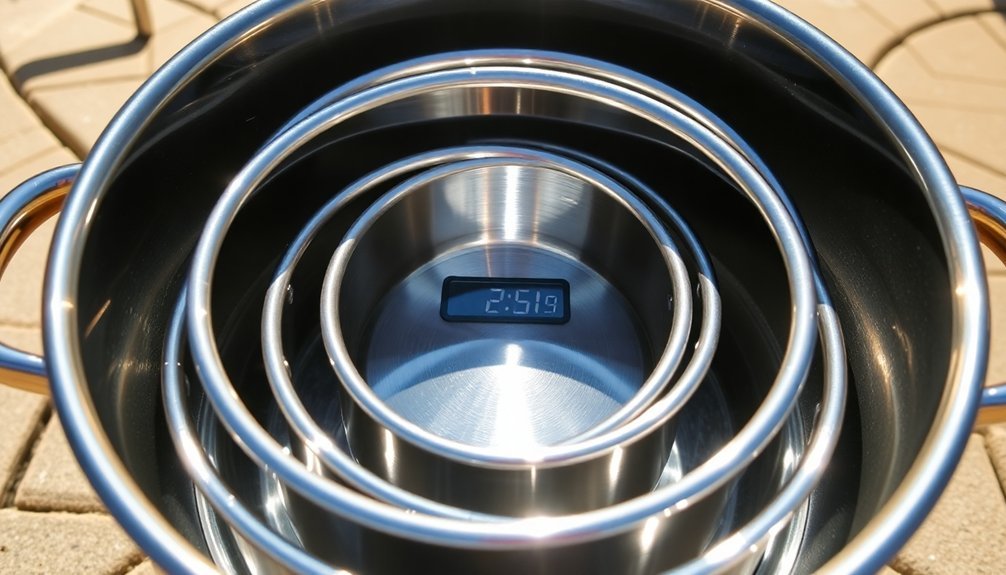
When you stack cookware with multiple layers of different metals, you'll get superior heat distribution compared to single-layer options.
Your multi-layer cookware's core, typically made of aluminum or copper, spreads heat evenly across the surface, eliminating frustrating hot spots that can burn your food.
You'll notice the difference when cooking delicate dishes that require precise temperature control.
The high thermal diffusivity of these materials guarantees heat travels quickly and uniformly throughout your cookware.
A fully clad design provides consistent and reliable heating from base to rim for optimal cooking results.
While single-layer pots often struggle with thermal discontinuity and uneven heating, your stacked arrangement maximizes the full cooking surface.
The combination of non-reactive stainless steel outer layers with highly conductive inner cores gives you the best of both worlds: durability and exceptional heat distribution that's essential for sun-powered baking success.
Space Optimization Methods
Making the most of your sun-powered baking setup starts with smart space organization.
You'll want to maximize vertical space by mounting storage solutions on walls, including hooks for cookware and racks for utensils. This frees up valuable counter space for your active cooking needs.
Choose multifunctional equipment that can handle various recipes, like enamel-coated granite or cast iron cookware. Implementing custom-built workspaces allows for better adaptation to your specific solar cooking needs.
When you stack your bakeware, you can cook multiple items simultaneously while maintaining efficient heat distribution.
Position your solar cooker in a central location with clear sun exposure, using the sun dot on the glass door as your guide.
You can enhance efficiency by adjusting cooking times seasonally and employing stacking techniques for larger meals.
Remember to arrange your workspace to minimize the need for repositioning throughout the day.
Weather Adaptable Cooking Solutions
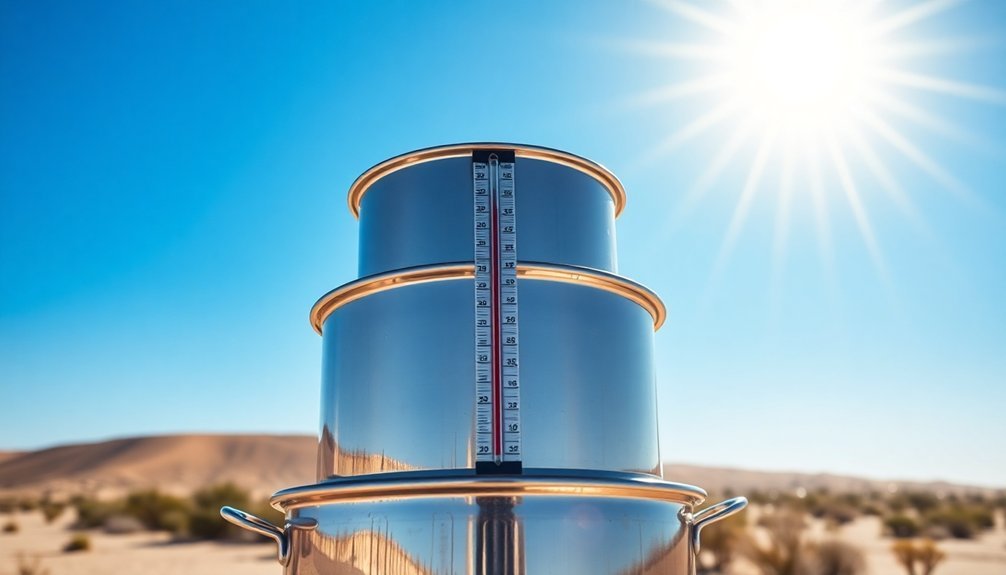
Because weather can be unpredictable, a robust cooking system needs multiple backup options. You'll need to adapt your cooking methods based on available conditions, whether that's using solar power on sunny days or switching to biomass solutions during cloudy weather. For maximum resilience, you'll want to master multiple cooking technologies. The Waterproof Fire Sticks help maintain reliable flames even in challenging weather conditions.
| Weather Condition | Primary Solution | Backup Method |
|---|---|---|
| Sunny | Solar Cooker | Induction Stove |
| Cloudy/Rain | Biomass Stove | No-Cook Meals |
| High Winds | Protected Fire Pit | Indoor Cooking |
When conditions aren't ideal for solar cooking, you can rely on your Inferno PRO or Ember Off-Grid oven. Set up a dedicated outdoor cooking station with windbreaks to maximize efficiency across all methods. Remember to keep your cookware organized and ready for quick shifts between different cooking solutions.
Multiple Dish Cooking Techniques
The art of cooking multiple dishes demands skillful planning and coordination, especially when using solar-powered equipment.
You'll need to create a detailed cooking cheat sheet that tracks preparation times, temperatures, and specific instructions for each dish. Keep this guide visible in your kitchen for quick reference.
Before you start cooking, organize your ingredients and utensils strategically. You can streamline the process by using versatile items like frozen vegetables and pre-mixed seasonings.
When using solar ovens, select black pots to maximize heat absorption and stack them efficiently. For optimal cooking results, place your dishes in high-temperature oven bags when stacking cookware. Remember to monitor the sun's position and adjust your cooker accordingly.
For complex meals, consider combining different cooking techniques and using store-bought components for certain dishes. This approach helps you manage multiple items while maintaining consistent cooking temperatures throughout the process.
Moisture Control Strategies
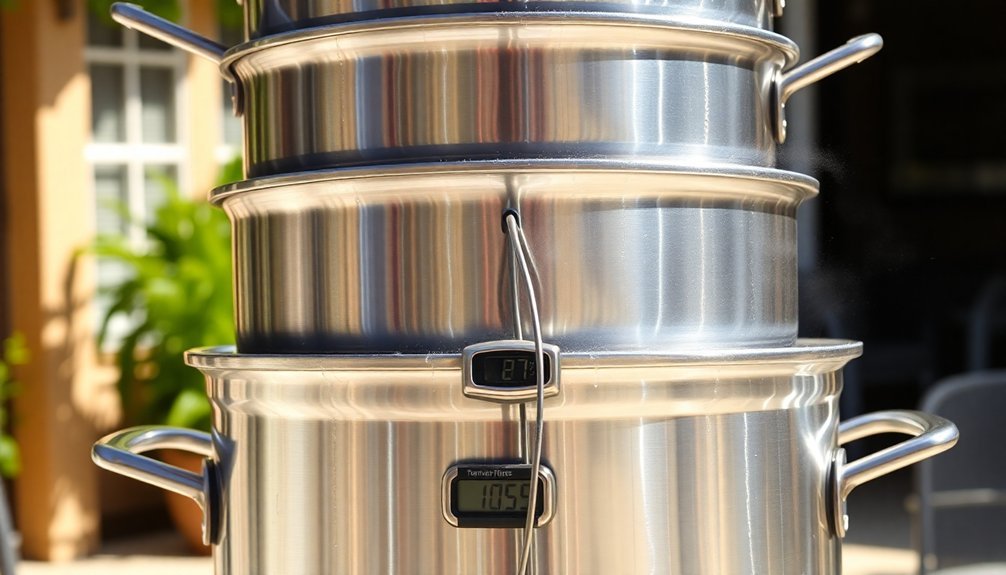
Successful solar baking hinges on proper moisture control to achieve perfect cooking results. You'll need to monitor humidity levels carefully when stacking your cookware, much like in a solar kiln. By creating small gaps between stacked pots, you're allowing excess moisture to escape while maintaining ideal cooking temperatures.
To prevent your baked goods from becoming soggy, use proper ventilation techniques. You can adjust the positioning of your cookware to create small air circulation pathways, similar to the gaps used in solar kilns. This controlled airflow helps maintain the right moisture balance for your dishes.
When stacking multiple pots, make sure there's enough space between them for steam to escape. You'll know you've achieved proper moisture control when your baked items develop the right texture and aren't overly wet or dry.
Frequently Asked Questions
What Materials Should I Avoid When Stacking Cookware in a Solar Oven?
You'll want to avoid glass, reflective surfaces, light-colored vessels, and thick metal cookware when stacking. Don't use cardboard or uncoated wood either, as they'll reduce heat transfer and retention considerably.
How High Can I Safely Stack Cookware Without Compromising the Oven's Stability?
You shouldn't stack cookware higher than 2-3 pieces to maintain stability. Keep your total stack height under 12 inches and guarantee each piece nests securely with proper weight distribution for safety.
Does Stacking Cookware Affect the Solar Oven's Overall Cooking Temperature?
Yes, stacking cookware affects your solar oven's temperature, but it's manageable. You'll maintain good heat levels by using dark-colored pots, proper spacing, and lids. The top items get direct sun, lower ones get radiant heat.
Can I Mix Different Types of Cookware Materials When Stacking?
You can mix different cookware materials, but it's not ideal. You'll face uneven heating and potential damage to your pots. It's best to stick with similar materials for consistent cooking results and durability.
How Do I Prevent Flavors From Mixing When Cooking Multiple Dishes?
You'll need to use separate cooking vessels, stagger cooking times, and maintain good ventilation. Keep strong-smelling dishes covered and apart from others, and make sure you're using clean, non-reactive cookware for each dish.
In Summary
You'll find stacking cookware in solar cooking offers multiple advantages that transform your outdoor baking experience. Not only will you maximize heat distribution and save precious space, but you'll also be able to cook several dishes simultaneously while maintaining better moisture control. Whether you're dealing with changeable weather or trying to feed a crowd, stacked cookware makes your solar cooking more efficient and reliable.
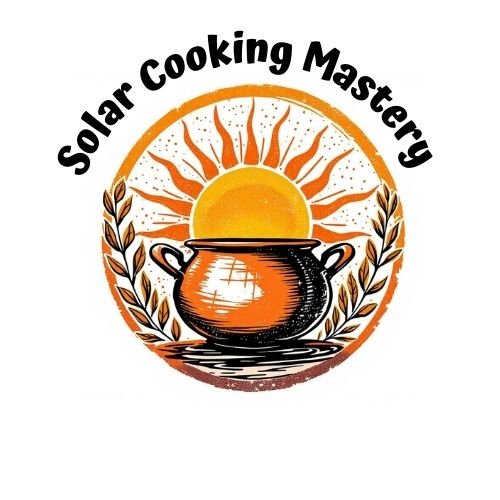
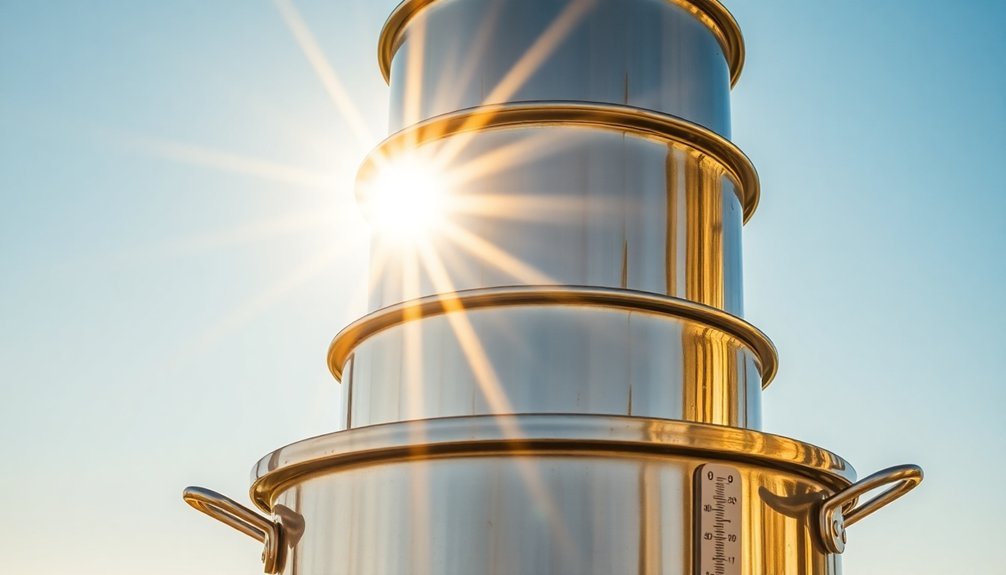
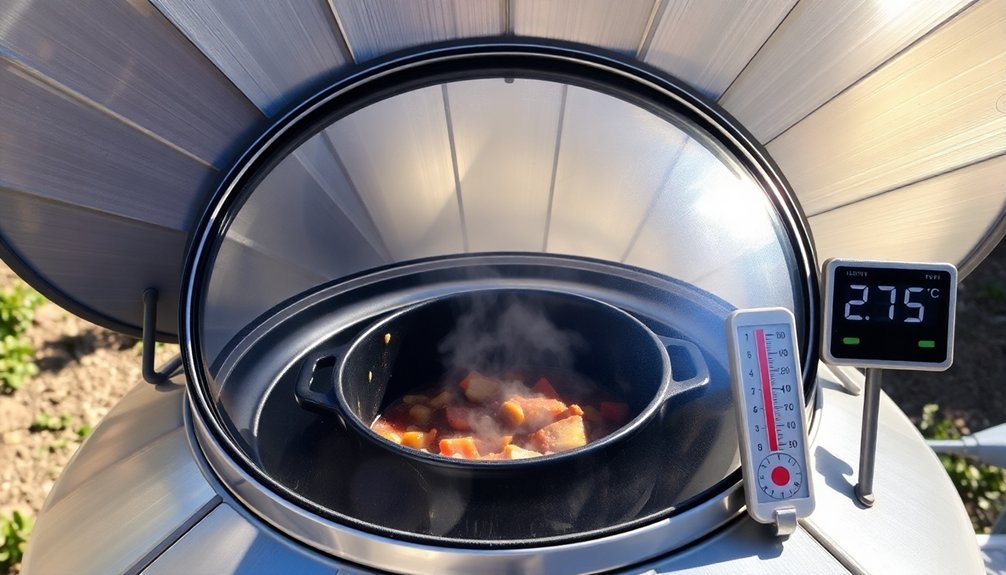
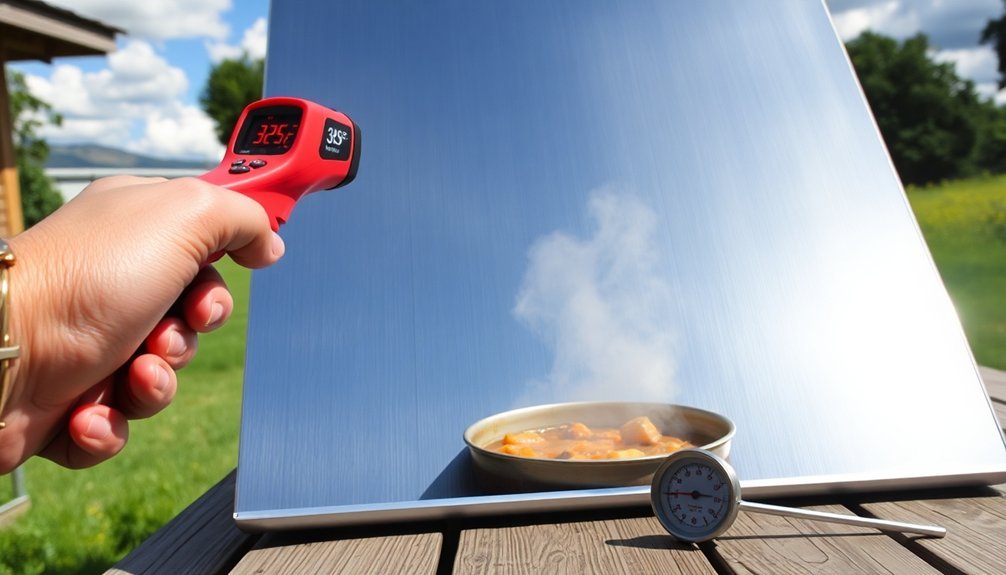
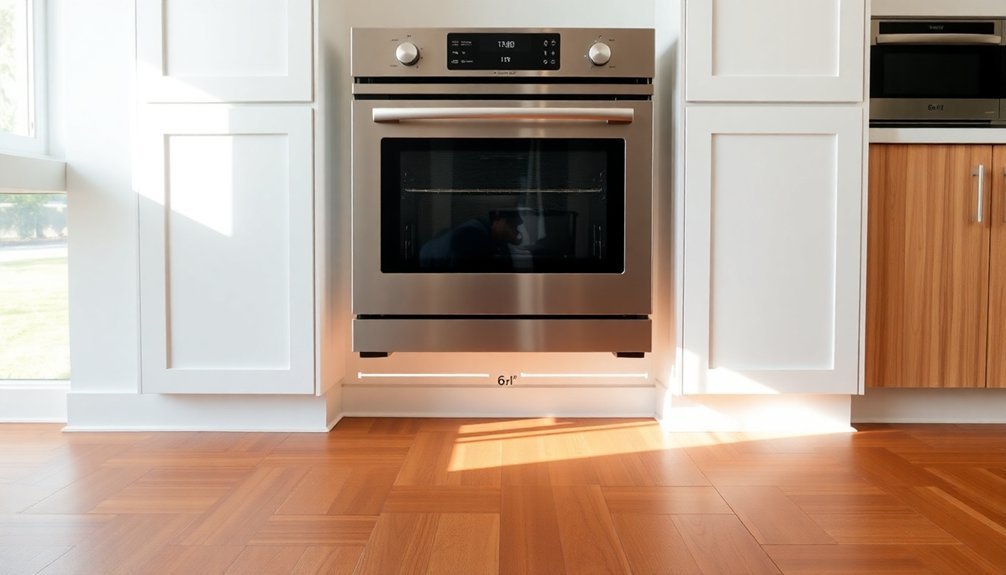
Leave a Reply